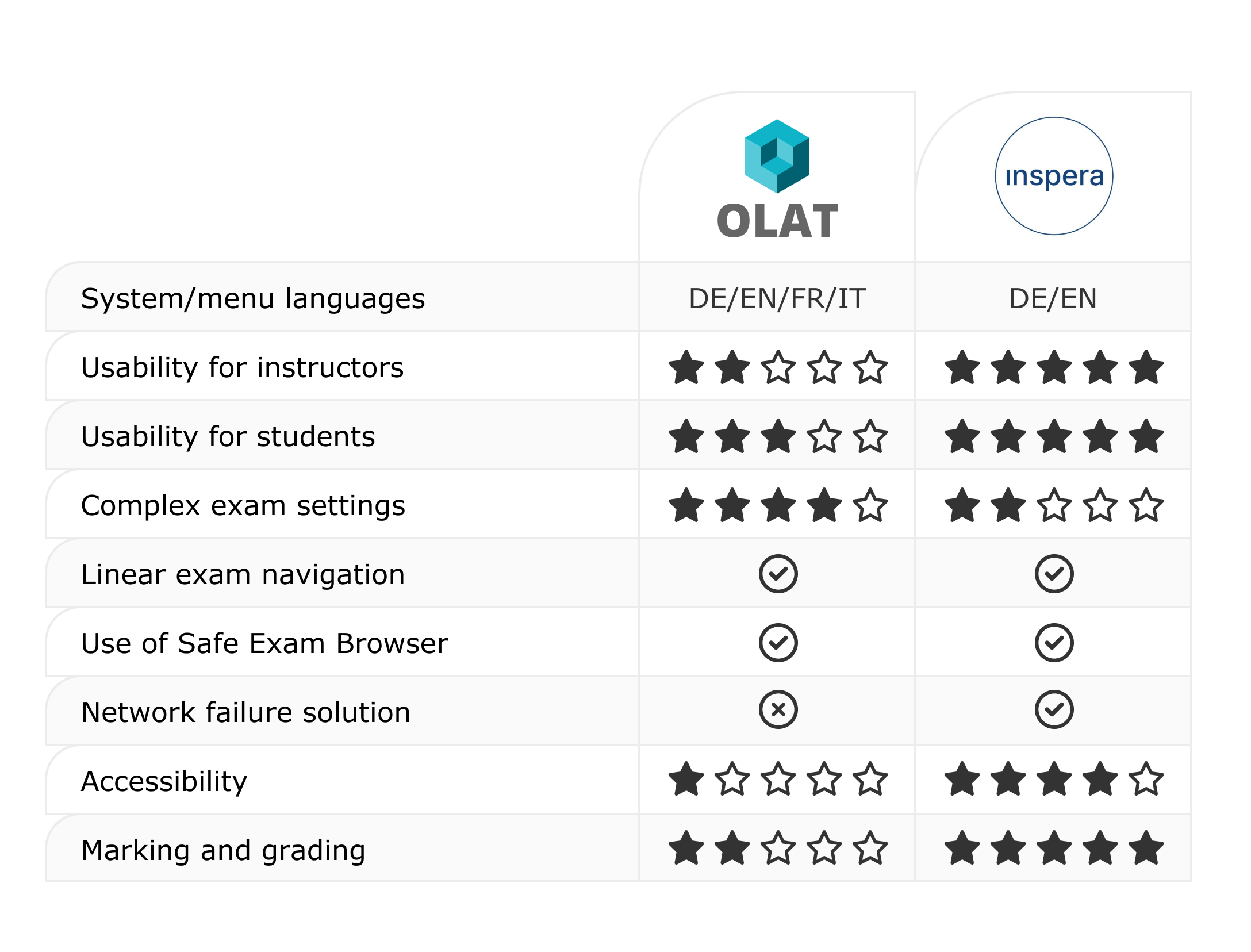Navigation auf uzh.ch
Navigation auf uzh.ch
Examination software can support lecturers in many phases of an examination. Compared to classic paper-pencil exams, they have the following strengths:
EPIS will offer two exam softwares starting in the spring 2023 semester: OLAT and Inspera. When registering for your online exam, you can select the exam software you want to use.
Note: Consult with your department's coordinating office before registering your online exam(s). There might be directives on the faculty or institute level regarding the use of OLAT or Inspera.
